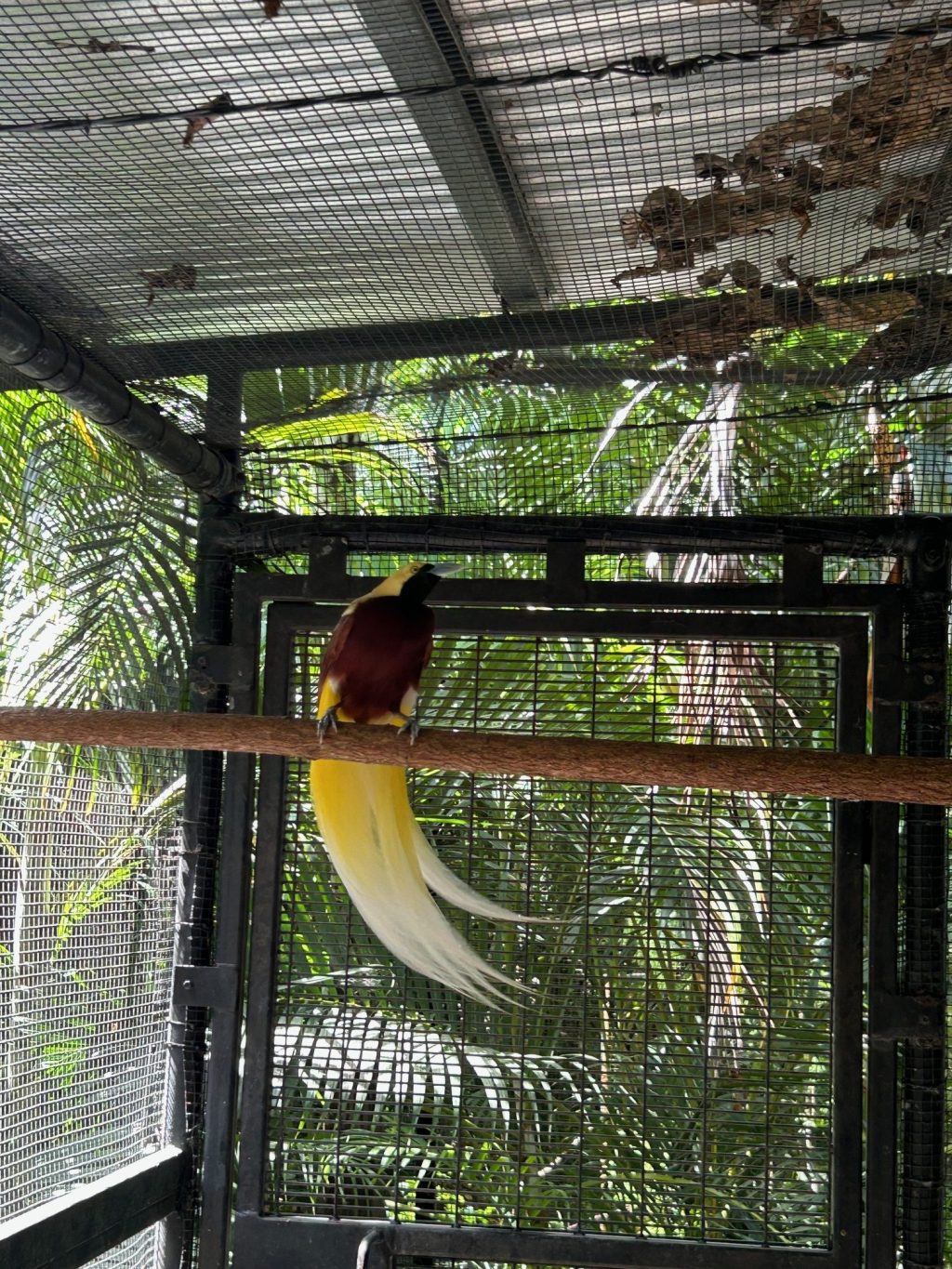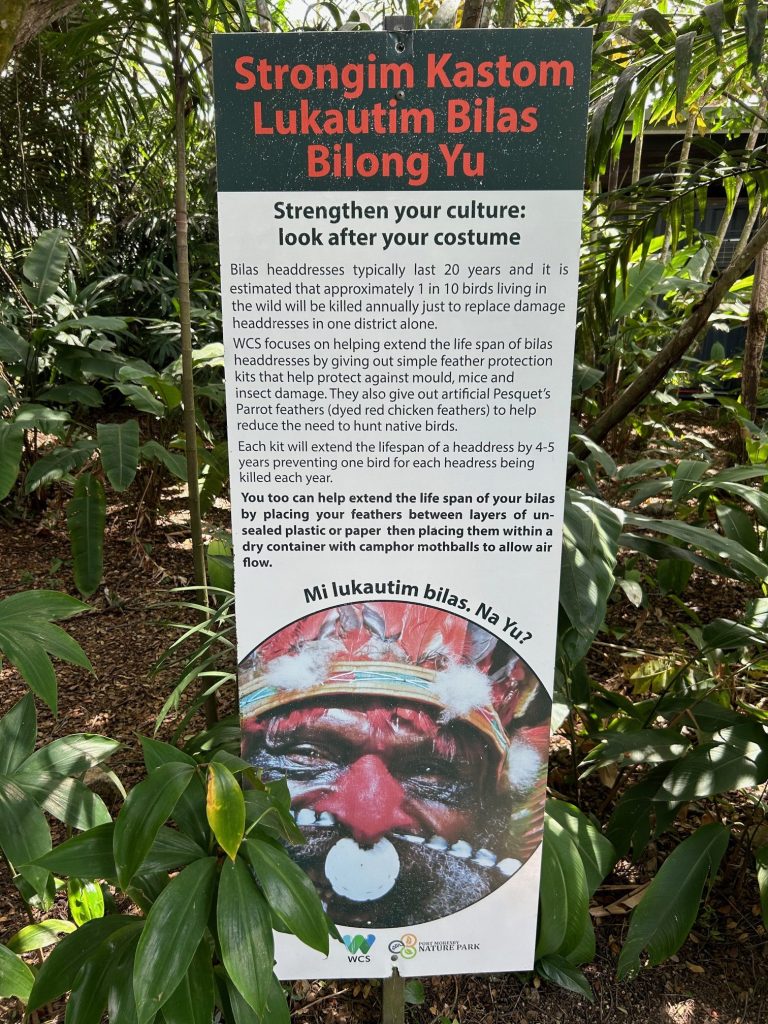A cancelled flight and a consequent accommodation mix-up meant I only had one full free day in Port Moresby, the rest of the time being taken up with waiting for the hotel computer to say ‘yes’ and then having to find a pharmacy for medication for this damnable head cold I picked up in Honiara a few days ago.
But I wasn’t sick enough to justify lounging about the Port Moresby Hilton all day, so the front desk organised for an Uber to drive me around for half a day for a negotiated price of 200 kina, about $A75. A bit over the odds no doubt but I’m no good at haggling.
My beaten-up minibus arrived at the same time as a fleet of limos picking up some VIPs. I exited the Hilton in the middle of an impressive throng of blokes in suits and sunglasses and a few smartly-dressed, bejewelled women. I heard the word ‘minister’ and there were handshakes and smiles, some of them in my direction. (It pays to be careful when you’re a politician – that scruffy old chook just might be a journalist. (As it happens I was no threat. Didn’t even get it together to whip out my phone and take a few sneaky pics.)
For my 200 kina I got a driver and another bloke, whose presence was never explained. I wouldn’t exactly call him a guide because his English was no better than the young driver’s. But they were genial fellows and their minibus had aircon, which was nice although Port Moresby seems significantly cooler and breezier than either Honiara and Nadi were.
They made a point of telling me where they were from. Not the lowlands, or the highlands, where people have darker skin, but the central southern coast. They pointed to their light skin colour as being indicative of their ethnicity. (In my post on the Solomon Islands I note this same diversity of skin colour and culture.)
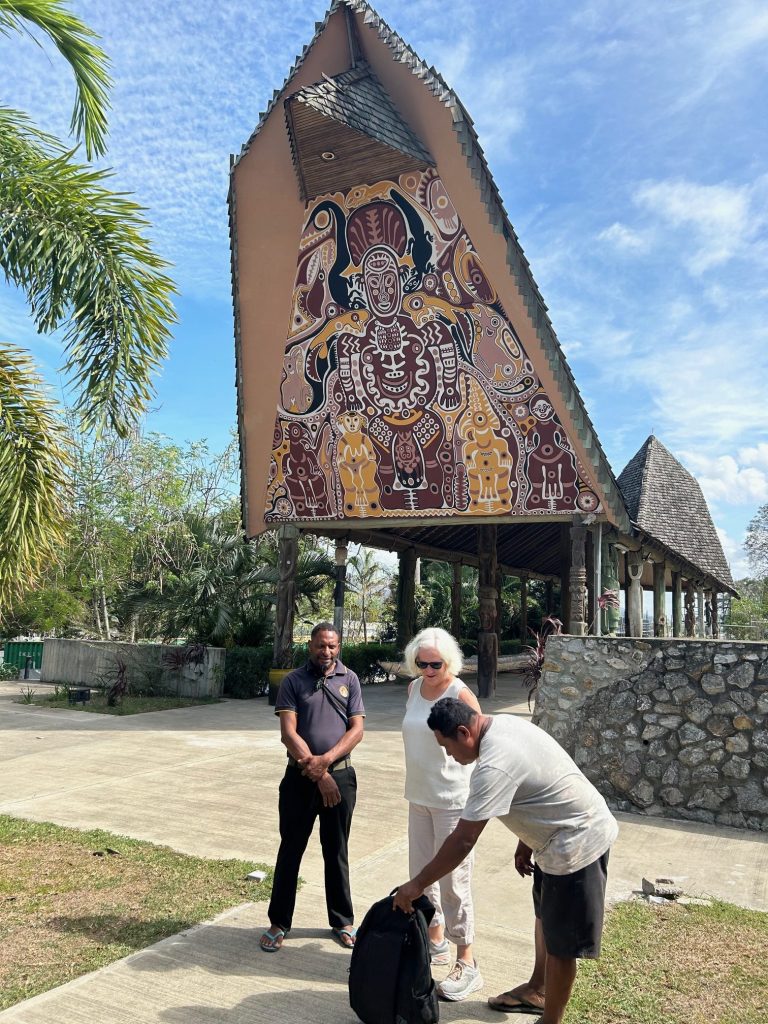
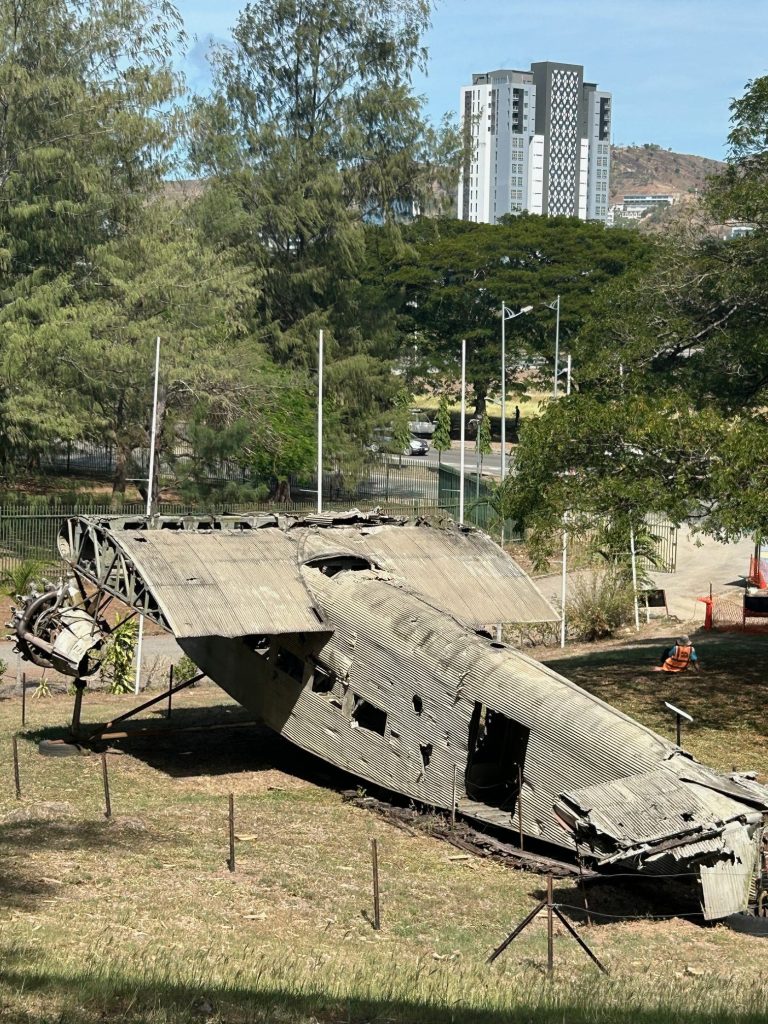

First stop, the National Museum and Art Gallery. Open and FREE, according to its website.
Alas, when we got there, it was closed. Had been for a few months, according to the uniformed custodian (see above pic. far left) who said there was a ‘smell’ problem that just couldn’t be fixed. Pity. I would have liked to see more of this striking indigenous architecture and design. And the wartime history. There was this plane wreck outside.
My other chosen destination was the Port Moresby Nature Park, and that turned out to be an absolute gem. It’s the only zoo in PNG and is ‘the single most successful conservation story in the Indian-Pacific region’, according to one online description. It was in a parlous state when an Australian couple with experience in zoo curation were invited by the governor of Port Moresby to come over and “tidy it up”. They managed to keep up the rescue and breeding programs through the Covid years when there was little money to feed the animals and the very real threat that local people might actually even raid the zoo for meat!
Tourists pay 22 kina entry fee, less than locals. A sign at the front desk explains that this is intended to support the park by encouraging local residents to visit, as well as tourists. I was happy to pay the extra. I just wish there were more visitors of both types here, although it was nice having the animals and the helpful staff almost to myself. But I do think this place should be massively supported.
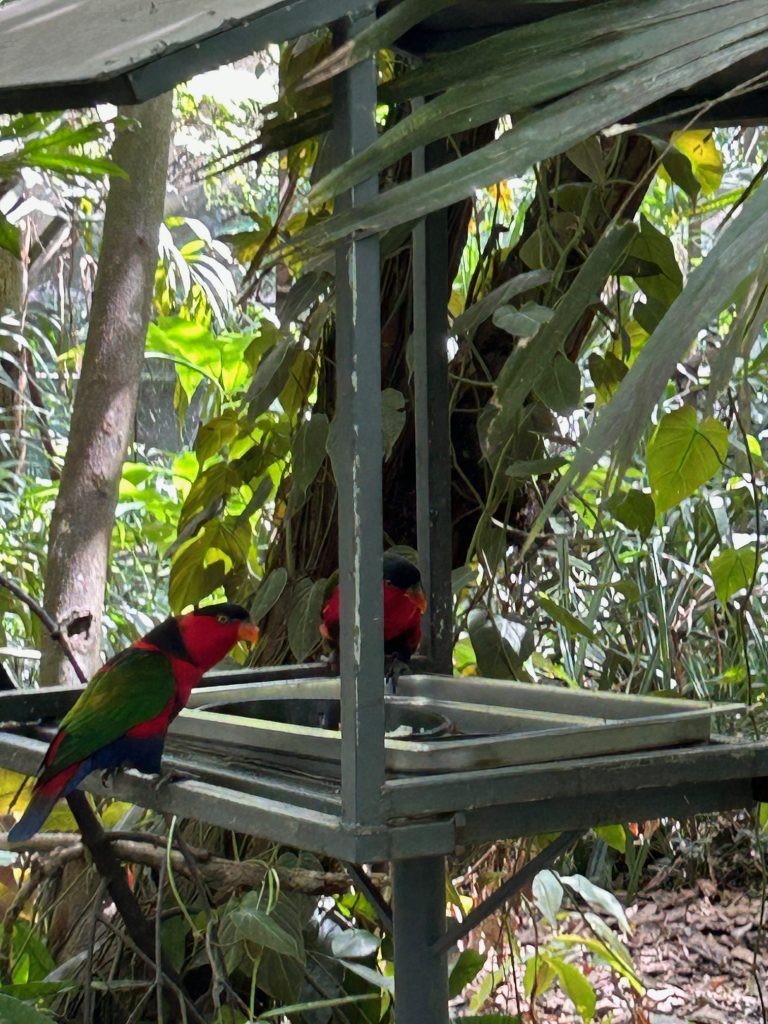
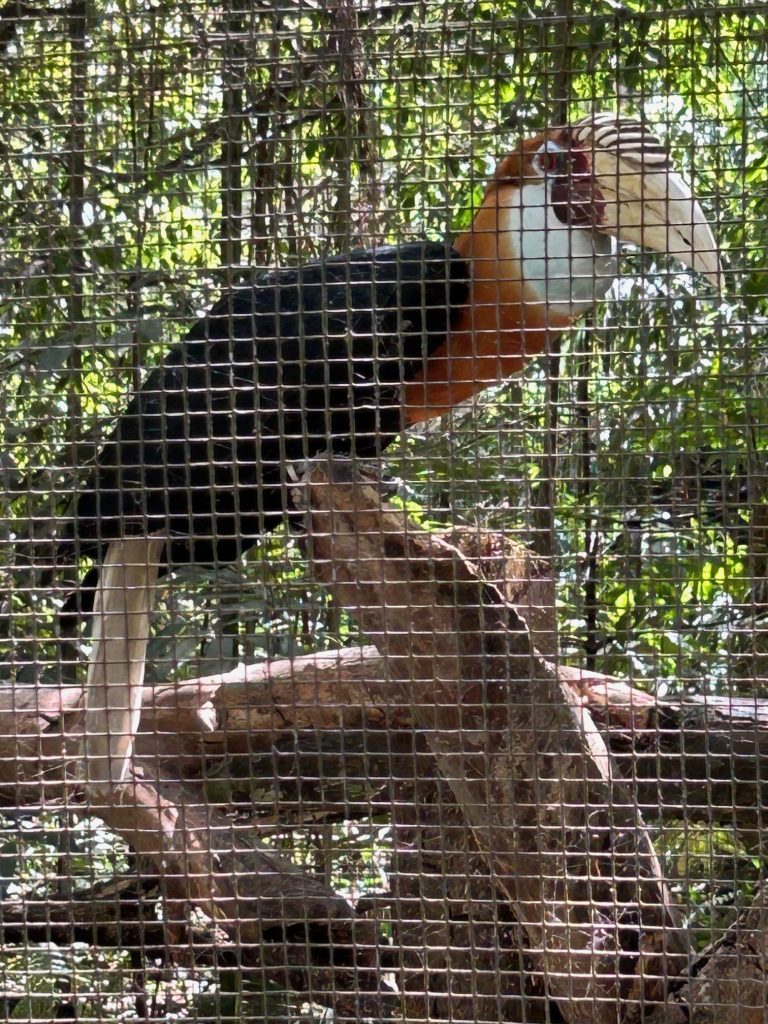

The birds are spectacular. Clockwise from top left: Pesquet’s parrot, hornbill, bird of paradise (and see featured pic). The pics below are the Victoria Crowned Pigeon, a kind of monster mutant turbo-charged version of the common pigeon on steroids. It’s got a coo like the rumble of a Harley-Davidson. In fact the bikie reference is spot-on. This big bruiser made me duck and squeal when it dive-bombed me from its perch.



There are lots of species here we know in Australia, like bats (below) and sulphur-crested cockatoos and cassowaries, reminding us that the island of New Guinea was once part of Gondwana.



So too with the land animals. There are macropods like wallabies and this tree kangaroo (below) the heaviest arboreal marsupial. And yes, they’ve got saltwater crocodiles. They raise them till they get big enough to fend for themselves, then they are just released anywhere!

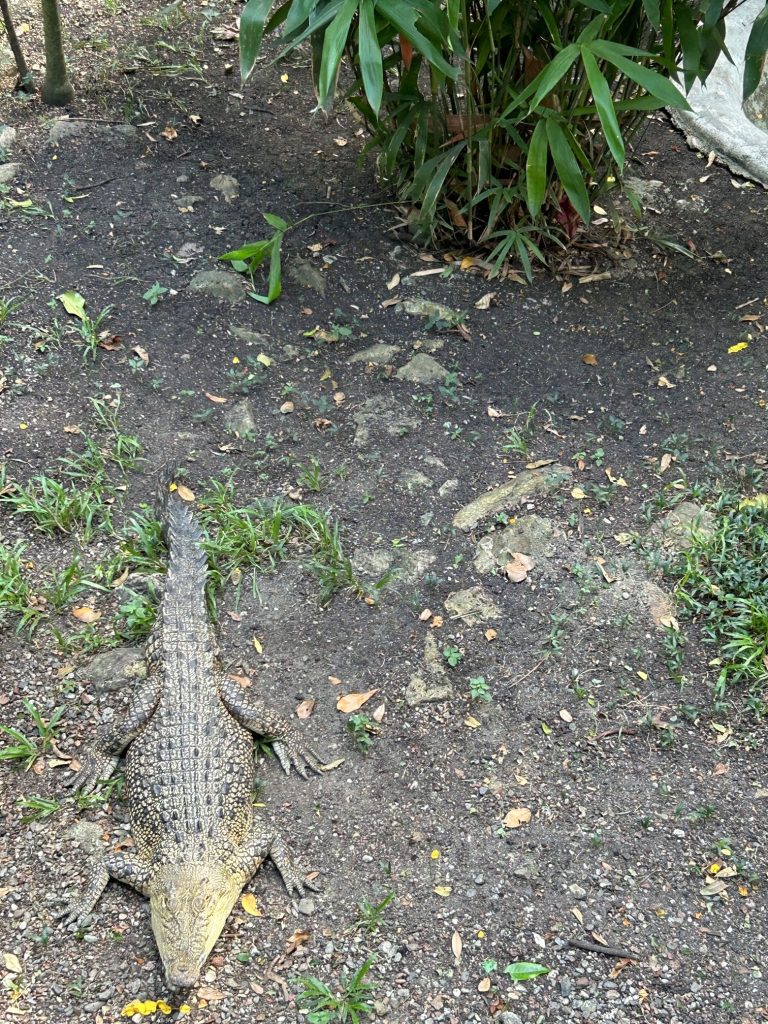
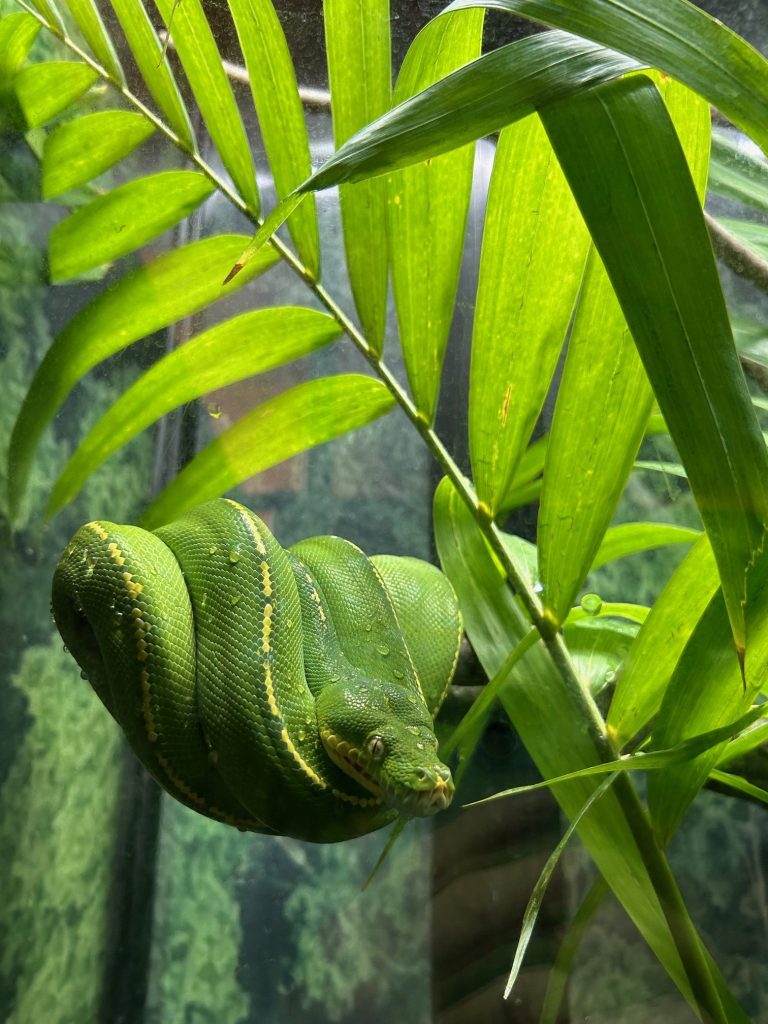
The green tree snake (above right) is not the same as the common Australian green tree snake, which is only green on the underbelly.


This shy little critter is a cuscus, an important source of protein for the people of Manus Island, who keep no other livestock. Its numbers are diminishing, as are those of the pig-nosed turtle next along. Both are gondwana creatures with populations in both Australia and New Guinea. They are both subjects of the Nature Park’s breeding and conservation program.
I love this sign, which encourages Papua New Guineans to substitute fake feathers for the real thing in ritual headdress in order to save threatened bird species.

The staff lady tickled his tummy and the cocky said ‘hello’. Can’t help liking these cheeky buggers, even if they are noisy and destructive.

